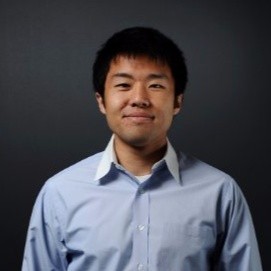Healthcare IT
Thought Leaders in Healthcare IT: Art Papier, CEO of VisualDx (Part 4)
Sramana Mitra: What level of adoption does this represent? You have a lot of hospitals, clinics, and individual doctors using your software. What level of penetration do you have in your total available market? This gives me an indication of the status of this technology adoption right now in the market.
Art Papier: We are at 5% of the global market. It’s early in the cycle because most healthcare systems have focused on business analytics. In the US, it’s all about charge capture and making money in a fee-per-service system.
>>>Thought Leaders in Healthcare IT: Art Papier, CEO of VisualDx (Part 3)
Art Papier: Doctors learn that patients always come into the office with atypical symptoms. An example would be a myocardial infarction or heart attack. If I said that the patient had crushing chest pain, was sweating, was fatigued, and had pain down the left arm, you probably know that they are having a heart attack.
Anyone who has watched television knows what the signs of a heart attack are. But if I said that the patient had a toothache, was tired, and is female, there is a good chance that somebody would make a snap judgment that it is not a heart attack because there is a bias that women don’t get heart attacks. This is not true.
>>>Thought Leaders in Healthcare IT: Art Papier, CEO of VisualDx (Part 2)
Art Papier: Our technology is not just about providing a library of images; it’s an intelligent search. You can see details like where the patient traveled, what kind of medication they are taking, their occupation, their symptoms, or their labs to develop the diagnostic possibilities.
We were tagging these images for several years. So when machine learning came along, we were able to use these tags to accelerate machine learning on the pictures.
>>>Thought Leaders in Healthcare IT: Art Papier, CEO of VisualDx (Part 1)

Medical Design Support is an emerging field in its early stages of technology adoption. This conversation looks at how the field is evolving.
Sramana Mitra: Let’s start by giving our audience a bit of background about yourself as well as VisualDx.
>>>Thought Leaders in Healthcare IT: HealthSherpa CTO Ning Liang (Part 3)
Sramana Mitra: Do you get paid commissions on the full price?
Ning Liang: Yes, we do.
Sramana Mitra: What is the situation with the semi-legal immigrants in the country – people who do not have Employers Tax Number? Are they eligible for Obamacare?
>>>Thought Leaders in Healthcare IT: HealthSherpa CTO Ning Liang (Part 2)
Sramana Mitra: You said Google search. Are people doing Google searches and you are catching them at the point of search, or is there some other way that you are going to market?
Ning Liang: That’s correct. Google search is one component of our go-to-market strategy. We also partner with companies whose audience may overlap with this segment that I mentioned, or audience that may not have health insurance through an employer.
>>>Thought Leaders in Healthcare IT: HealthSherpa CTO Ning Liang (Part 1)

Much of Obamacare goes untapped due to lack of information and awareness. HealthSherpa is helping consumers access the facility.
Sramana Mitra: Let’s start by introducing our audience to yourself as well as to HealthSherpa.
>>>Thought Leaders in Healthcare IT: Chini Krishnan, CEO of GetInsured (Part 2)
Sramana Mitra: Is there an example of what cannot be done without technology?
Chini Krishnan: Absolutely. Let’s take a couple of examples. A big part of what consumers need to navigate is decision support. If I’m eligible for the Affordable Care Act in California, I’ve got to figure out two things. One is the amount of the subsidy that I’m eligible for. That’s not possible without technology.
>>>